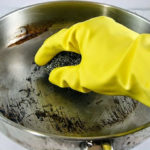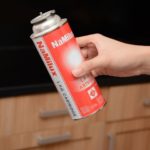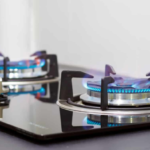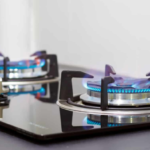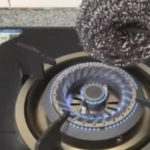Choosing the right pot size
Choosing the right pot size is crucial when cooking on a gas stove. Since the gas flame is limited, choosing the right pot brings two benefits: a pot that fits the stove size and adjusts the flame to the pot size helps cook food quickly without wasting gas; a pot that is the right size for the amount of food reduces the risk of burning and improves the taste of the food. Therefore, choosing the right pot size for the amount of food and the gas flame is very important.
Choosing the right pan type for the material
When cooking on a gas stove, you should choose pans that are suitable for the material. Do not choose pans that are too thick as it takes more time to heat up and consumes more gas. However, do not choose pans that are too thin as they are easily burnt or difficult to adjust the temperature when cooling is needed. Therefore, you should choose pans that are made of the appropriate material.
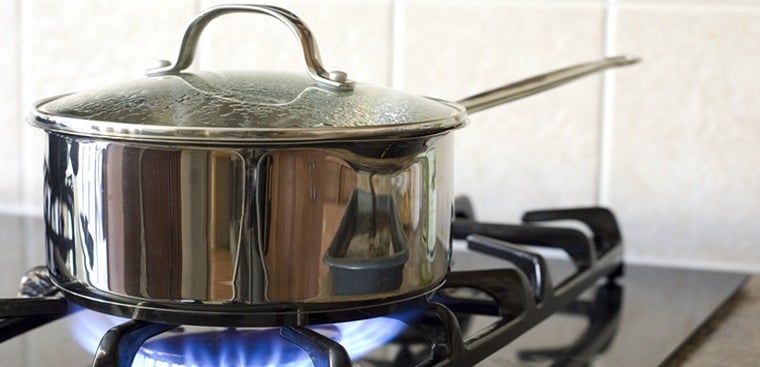
Adjusting the flame properly with the bottom of the pot
When turning on the stove, adjust the flame so that it only stays inside the pot, avoiding the flame from spreading outside because this will waste gas and heat. A too large flame that spreads outside the bottom of the pot not only increases gas consumption but also increases the risk of burns.
Focus while cooking
Focusing is very important when cooking on a gas stove. If you’re not focused, water can overflow from the pot, dirty the stove, and cause damage to the stove, leading to wasted time and gas. Therefore, when cooking, focus on completing the cooking task first before doing anything else. Focusing also helps make the food tastier.
Regularly clean the gas stove
Cleaning the gas stove not only keeps it clean but also makes the cooking process easier. A dirty gas stove will make the cooking uneven, the flame will be red and consume gas, as well as release gas into the house.
Furthermore, if the stove is not clean, it can damage the stove if the air hole is blocked, leading to gas instability and flame. Therefore, cleaning the gas stove plays an important role in saving gas and protecting the stove.
Arrange the cooking sequence scientifically
Before starting cooking, arrange the cooking sequence in a logical way to avoid turning the gas stove on and off multiple times. This helps save gas and cooking time.
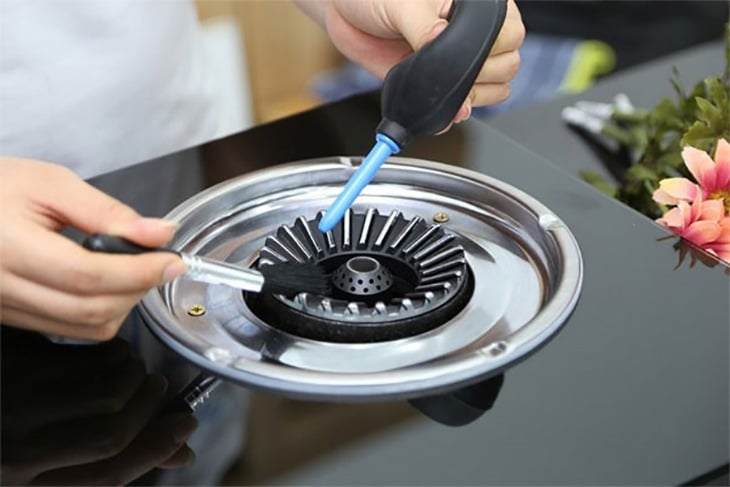
Lock the gas cylinder after cooking
After use, remember to lock the gas cylinder to prevent gas from leaking into the space. This not only saves gas but also ensures the safety of the family. Locking the gas cylinder also helps reduce gas leakage, ensuring safety for everyone and avoiding dangerous gas leaks.
Use flame arresters
Using flame arresters around the pot can prevent the flame from escaping, saving gas and reducing the risk of burns during cooking. Especially when cooking in a windy place, these flame arresters become even more important for safety and gas saving.
Calculate the amount of water needed for cooking
When cooking for many people, calculate the amount of water needed properly. Adding too much water frequently not only makes the food tasteless but also increases energy consumption during cooking. Therefore, calculate the amount of water needed properly to avoid this situation.

























